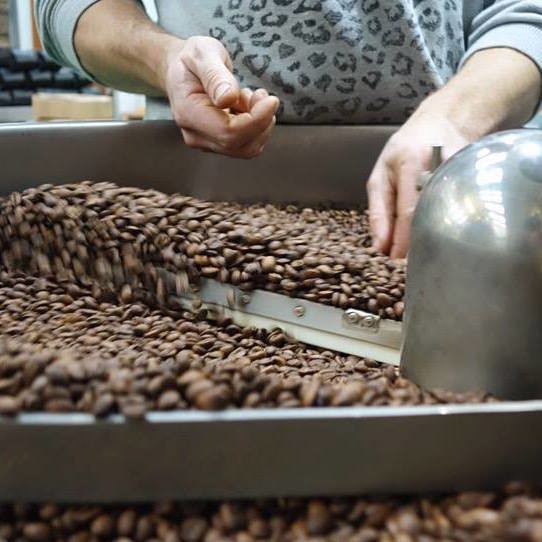Here at Alchemy we have a small but dedicated Roastery Team. The roles that are filled range from Green Coffee Buyer to Roastery Manager and from Roastery Assistant to Production Roaster. All of the team members who carry out these roles are also well trained and very experienced baristas.
So, why am I telling you all this?
Within this small team we spend a lot of time talking to each other about the coffee we source, the blends we make and the roast profiles and methodologies that we use in the roastery. It is a combination of the different ways a small team of people look at coffee that shapes the flavour profile – or Roastery Signature of the coffees we sell.
Recently, I noticed that in our conversations over the cupping table, one word kept coming up. it didn’t matter whether we were evaluating a new coffee for purchase, or a coffee whose roast profile was under development.
That word, you may have guessed by now, is Balance.

How we define ‘Balance’ in the coffee industry
The first two definitions that came up when I typed the word Balance into Google were,
“An even distribution of weight”, or my favourite,
“A situation in which different elements are equal or in the correct proportions.”
I really like that last point about correct proportions.

What we are talking about with the term Balance is to get the right proportions of Acidity, Sweetness, Body, Mouthfeel, Flavour and Aftertaste. The right proportions allow each one to be experienced, but no one feature dominates. In wine this is called structure. In life this is called harmony. Balance is that feature of a coffee that makes it elegant and complex, rather than a single feature experience.
Many of us in the speciality coffee movement have described traditional Italian style espresso as unbalanced, as the bitter, roasty flavours have not been balanced by acidity and sweetness, and so two teaspoons of sugar have to be added to the cup to bring it back. The sugar balances the drink, and in many Italian espresso bars it is added by the barista before the drink is served to the customer.
But speciality coffee is equally guilty. We have all had coffees where one feature such as Acidity can dominate and obscure the other features of the coffee. This was a big characteristic of Third Wave coffee a few years ago when many companies strove to roast lighter than each other to show they were the further along the bleeding edge. This led to a lot of sour, acidic, under-developed and unbalanced coffees, and has become a focal point for some people to criticise “sour Hipster coffee”. But it doesn’t have to be this way.
How balance is achieved?
As we saw in the previous article on Blends, balance can be achieved in an espresso blend by the careful selection of separate components that each bring a different element to the cup. But bean selection is not the only way to affect Balance, as we saw in the article on Acidity – a lot can be done in the coffee roaster.
The time and temperature path that the coffee takes in the roaster can accentuate or mute the acidity, it can highlight or obliterate the sweetness, and it can move flavours from chocolate into caramel or toffee.

We did an experiment a while ago when we noticed that another roastery had the same coffee on offer as us. We had both bought a few bags of the same green coffee from the same importer. This is good as it shows that both roasters had seen a similar potential in the coffee. We bought their coffee and did a blind tasting against ours. Being exactly the same coffee beans, this eliminated the “nature” element and focused on the “nurture”. What we noticed was that our coffee was more balanced with a complex but not dominant acidity – the other coffee had a slight roasty note but much more acidity that was a prominent characteristic of the cup.
We are not saying our way was right and their way was wrong. What we are saying is we tend to choose balance, and they instead chose to highlight the acidity and bring it to the fore. It would be a boring world if we all had the same tastes and liked the same things – and of course each craftsman has to develop their own signature.
We will continue to choose and roast coffees to provide a well-developed and well-balanced coffee experience, but every now and again when we find a coffee that highlights a particular characteristic exceptionally well, then we might just surprise you. We like to keep you on your toes!
If you would like to check out our blends or our seasonal single origin coffees, you can see our range for home delivery here. Or for Café supply, find more info here.
Next week we move on to the letter C, and we will be explaining the term ‘Cupping’.



